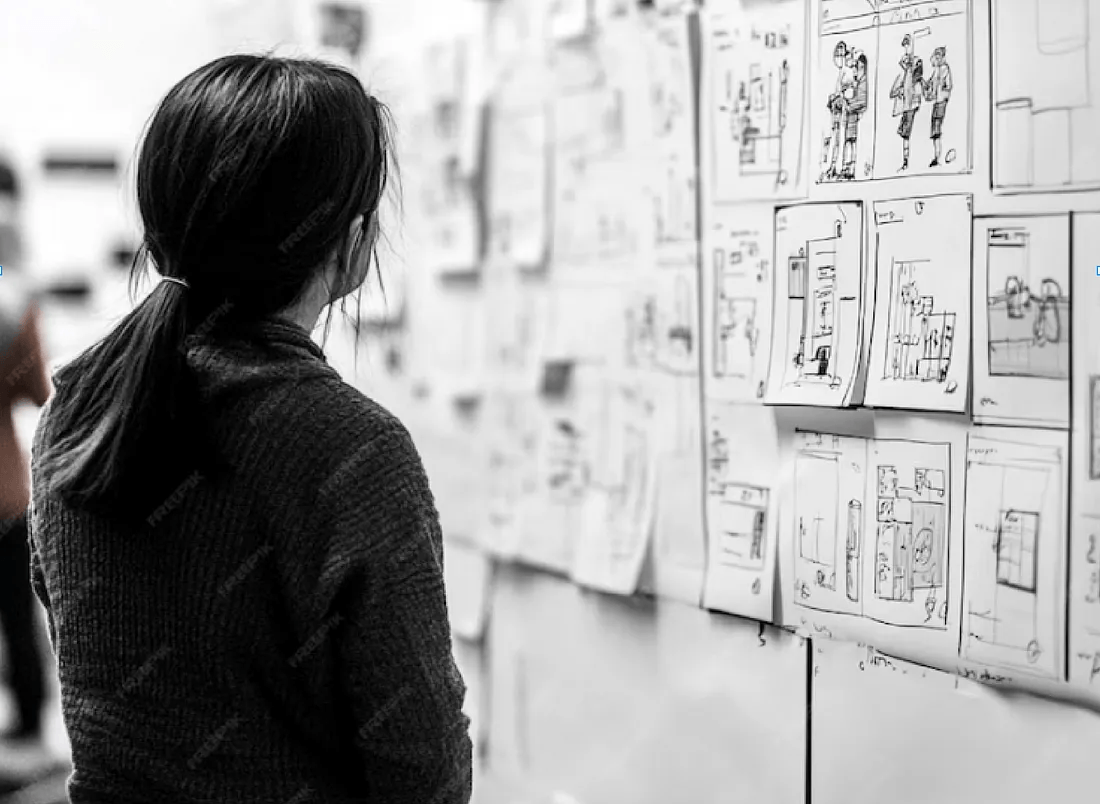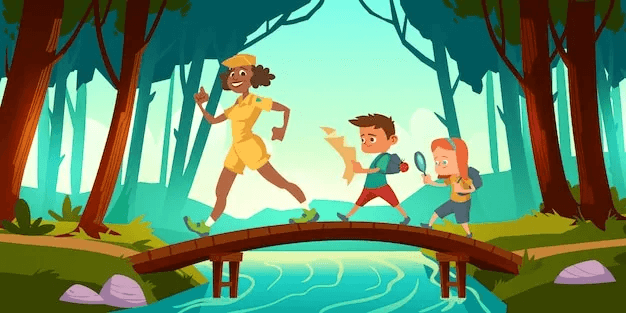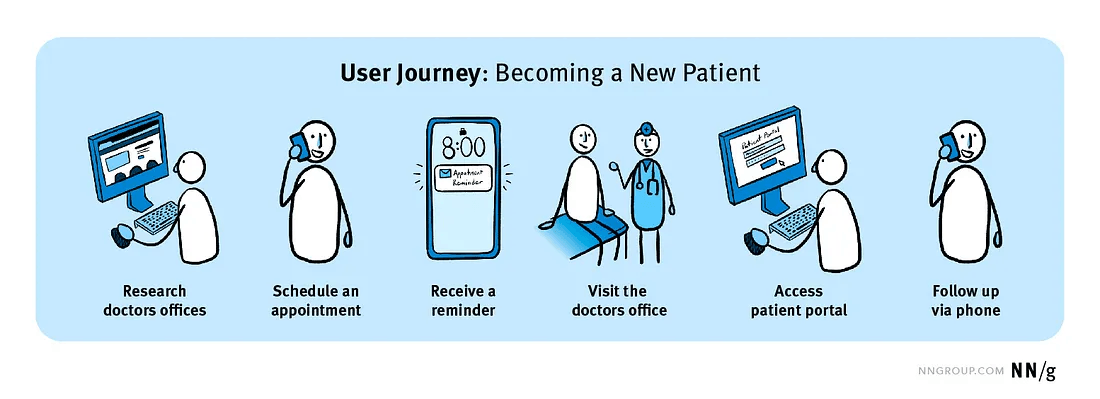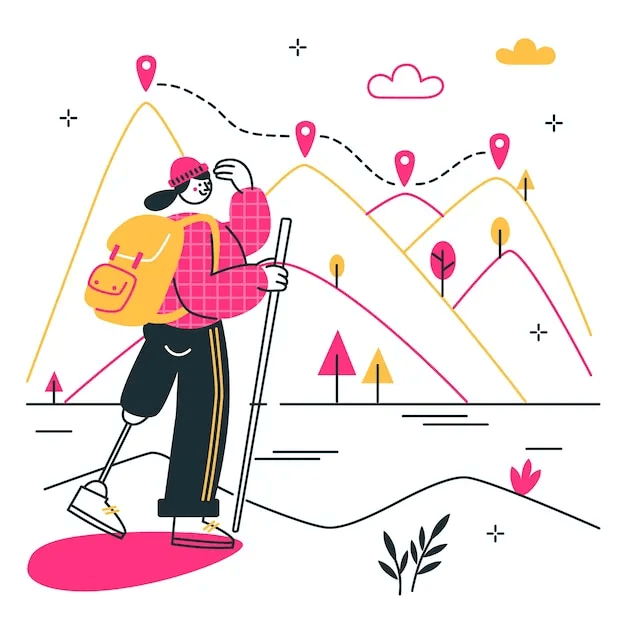Why Storytelling Matters in Product Design
Sharon David
20 Sep, 2024

Introduction
Storytelling isn’t just for kids, novels and movies. Storytelling is a powerful tool that brings ideas to life!
Storytelling is as deeply embedded in our biology as language itself. It’s not just that we like stories; we are addicted to them. We have always told stories, and our lives are organised around them.
~Jonathan Gottschall
Storytelling breathes life into business challenges and user needs, by vividly illustrating them for stakeholders and team members. This engaging approach not only clarifies a user’s journey but also reveals and resolves issues.

How to tell a good story
Visualising the Story
Take a look at the above picture. What does it convey to you? When you observe a photo, take a moment to pause and imagine yourself in that situation.
Ask yourself:
- Where is this place?
- Who are these people?
- What are they doing?
- Why are they here?
- What am I doing there?
- What am I trying to accomplish?
Understanding who the people are and what they care about is crucial for storytelling. By connecting these details, the story is brought to life.
Why is it important to tell stories?
Let’s think: Have you ever struggled to explain what your product does and its features, only to bore your audience and lose their interest?
Stories help paint a picture for the audience, making it easier for them to understand and relate to your point. A well-told story captures attention and keeps the audience interested.
Structuring of a story
A good story follows a clear structure which can be loosely understood as follows: Setting > Plot & Climax > Conclusion
This framework for a narrative can guide users through a meaningful journey:
- Setting: Once upon a time…
Here, we introduce the characters and set the stage for the story to begin by providing the necessary background information - Plot & Climax: the development of the story
As the story progresses, we describe the challenges the characters encounter, their actions, and their destinations. We also convey their feelings and expressions as they navigate their journey.
NOTE: Each story doesn’t follow a straight path to the end. Instead, it features a climax where the direction is uncertain and involves many twists and turns along the way.

3. Conclusion: and they lived happily ever after…
At the end of the story, we assess how well the plot has been conveyed. This is the point where the story will either reach a happy or sad conclusion.
How to use storytelling
How to Use Storytelling in Product Development?
A compelling story begins with a clear picture and these same instruments can be employed for product design.
Who is in the Story: Identifying user personas as the “characters”. This helps us understand who the users are, their goals, and how they interact with the product.
Character Role: Just as characters have specific roles and entry points in a narrative, understanding user roles and touchpoints helps us grasp the full story more effectively.
While building products, it’s crucial to use storytelling to ensure that stakeholders, developers, and other actors understand why a certain function is needed.
Let’s look at some example scenarios
Example 01: Display product insights and metrics in a separate section.
Story :
Alex, a Product Manager, is having difficulty making strategic decisions due to unclear, unorganized data on monthly, weekly, and daily revenue. Alex needs this data to be visually presented in an organized manner to make informed business decisions and drive strategic planning.
This story explains why Alex needs the feature and provides the team with a clear understanding of the rationale behind Alex’s request.

A new-patient journey comprises many touchpoints over a long period of time.
Example 02: Patient appointment screen.
Story:
Sarah, a patient needs urgent care and wants to book the next available doctor. The current system is confusing and slow. A streamlined appointment screen should show available slots for immediate booking to quickly address her urgent needs.
This story explains the urgency behind Sarah’s request for an improved appointment screen. The need for a more efficient and straightforward booking process is highlighted in the story and this, helps the development team to understand on the requirement of prioritizing and design features that will meet the patient’s urgent care needs effectively.
Benefits of storytelling
Storytelling guides users through their journey from point A to point B, offering the audience and team a clear understanding of feature deliverables, user interactions, and potential limitations
Key benefits of storytelling
Enhanced Journey Mapping: Storytelling helps us see and map out each step of the user’s journey, from first contact to reaching their goals, making the design clearer and more engaging.
Improved Problem Identification: By looking at the user experience as a story, we can find and fix issues more easily before they affect users, which leads to better problem-solving.
Clearer Touchpoints and Interactions: Storytelling shows us important points and interactions in the user journey, ensuring each part is well-designed for a smooth and meaningful user experience.

Conclusion
In essence, storytelling makes the Product design process more dynamic by guiding users smoothly through their journey and effectively addressing their needs and resolving their challenges. By viewing the user experience as a story, we design products that not only fulfill user needs but also connect with them on a deeper, more meaningful level.

More about the author:
Sharon David
Sharon is a UI/UX Lead at Insighture, bringing 12 years of experience leading and mentoring design teams. She excels in user research, usability testing, and prototyping, creating intuitive and engaging interfaces rooted in design thinking methodologies.